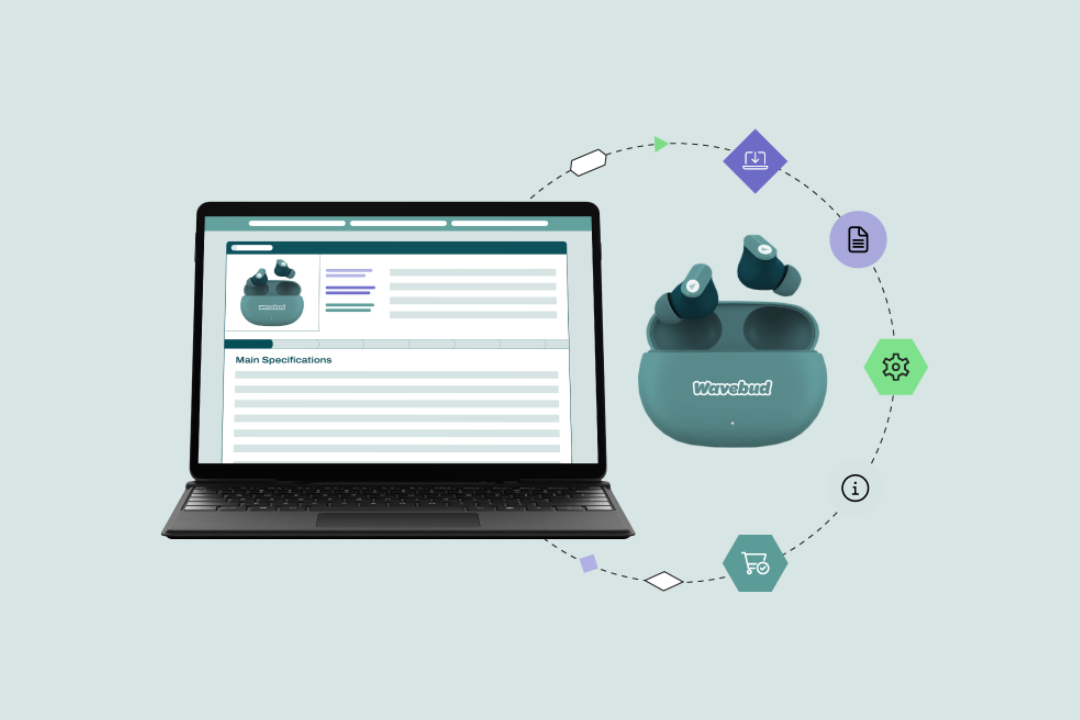In 2022, e-commerce runs retail. To sell, you must know how to attract and retain customers through your online store and through effective pricing strategies. 1WorldSync’s experts created this guide for online pricing strategy to help you succeed. Read on to learn how to price your products and services to drive sales.
Pricing Strategies
Your online pricing strategy is the model your business will use to determine the best price for your products. Your pricing strategy will base prices on production, labor, and marketing expenses then add a percentage to maximize your profit.
Myriad methods exist to determine online product pricing, and there isn’t a one-size-fits-all strategy for every business or industry. Below we explore the best online pricing strategies for product sales.
1. Competition-Based Pricing
Competition-based pricing is built on the existing rate for the same (or similar) products competing brands are selling. With this online pricing strategy, you use your competition’s pricing as a baseline for your own.
Competitive pricing methods are ideal for brands or retailers trying to stand out in a saturated market. When products are identical, even a few dollars’ difference can persuade a shopper to choose your business over another.
This pricing method doesn’t take into account demand or production costs but is based solely on other products and brands you’re competing against.
2. Cost-Based Pricing
Cost-based or cost-plus pricing focuses on the cost of producing your product or service then adds a desired profit margin. This method is typically employed by retailers selling physical goods.
Cost-based pricing is ideal when you’re competing against brands and retailers selling identical products. But you must strike a careful balance when creating a cost-based pricing strategy. Pricing too low undervalues your products. Pricing too high scares customers away.
You must remain keenly aware of your competitors’ prices and the consumer’s willingness to pay certain prices for your goods when determining your pricing.
3. Premium Pricing
When pricing your products, lowest isn’t always best or most appealing to buyers. A premium pricing strategy prices products high to convey more value or luxury than other similar products.
Premium pricing creates an image or perceived value for your products instead of communicating the actual value of your products. Brands that price according to luxury or premium pricing strategies provide value and status that other brands can’t.
Premium pricing is about perception. If your target audience desires luxury and exclusivity, allow premium pricing strategies to shape your online product pricing.
4. Value-Based Pricing
Unlike premium pricing, value-based pricing is structured around what your consumer is willing to pay for your products. In some cases, a company can charge more for a product but chooses to keep prices low to secure customer loyalty and boost customer perception of their brand.
If you take a value-based pricing approach, you must remain in touch with your buyers and what they’re willing to pay as well as how those numbers balance against your business’s goals. Value-based pricing attracts customers, but don’t price so low that you devalue your products and brand.
5. Bundle Pricing
Bundle pricing is exactly what it sounds like: you bundle two or more products for a single lower price. By promoting complementary products, you add value for your customers who want multiple products and are willing to pay more upfront for your goods.
Bundle pricing is an effective marketing tool that allows you to cross sell and upsell to your consumer. Your product detail pages can be tailored for bundle pricing with specific features. Hotspots, for example, allow you to promote multiple products simultaneously and let consumers imagine themselves using those products together.
How to Create a Pricing Strategy
Your pricing strategy will be unique to your business and determined by your products, your audience, and your goals. Below we give you a step-by-step guide to creating a pricing strategy for your business.
1. Evaluate Pricing Potential
The most important thing about your online pricing strategy is that it’s tailored to your business. As you craft your strategy, you must determine your pricing potential. This is the product pricing that you can realistically attain regarding cost, demand, and your target consumer.
Consider the following factors as you evaluate your pricing potential:
- Operating costs
- Consumer demographics
- Buyer demand
- Competitive advantages and threats
Have measurable, quantifiable goals as you evaluate your pricing potential. Your business goals help shape how you execute your online pricing strategies.
2. Create Buyer Personas
In any marketing or pricing strategy, you should create a buyer persona of your ideal customer. Most digital marketing teams create buyer personas early in their pricing strategy planning. Buyer personas help you determine the best ways to engage, endear, and convert your audience.
When conducting audience research, you’ll gather three types of data to create your buyer personas: demographic, psychographic, and behavioral data.
Demographics
Demographics are the hard facts about your audience: age, gender, marital status, profession, and where they live, among other things.
Psychographics
This data subset focuses on the beliefs and lifestyles of your audience. Activities, interests, opinions, attitudes, values: these are all psychographics that inform your buyer persona.
Behavioral Data
Your marketing team evaluates behavioral data to understand how consumers interact with your products and your site. Behavioral data shows how people behave online and allows you to understand consumer experiences and perceptions.
3. Analyze Past Pricing Strategies
The success or failure of past pricing strategies informs your approach with new online pricing strategies. Analyze historical pricing data to gauge how consumers may react to your new pricing and strengthen your strategy.
If this is your first time pricing your online products, conduct competitive research to learn how your competition is pricing their goods.
4. Balance Pricing and Goals
As you price for e-commerce, you want to ensure you’re earning profits. But profits must be balanced with your business goals. The prices you set must cater to your consumers and your bottom line.
Balancing your online pricing strategy allows you to
- Penetrate markets
- Increase profitability
- Improve market share
- Expand reach
5. Compare to Your Competition
Consumers want the best quality at the best price. Competing brands and retailers will influence how you build your online pricing strategy.
To strike the balance discussed in the point above, you must beat your competitors’ pricing or their value. If other brands offer the same product, beat their price. If you don’t want to take the lower pricing approach, price higher but provide greater value to the customer. Buyers want the best product for the best price, and if you can deliver on the value they’re paying for, you’ll win against your competition.
Creating an online pricing strategy requires you to evaluate multiple factors that drive you to your goals. When your team can analyze these factors against consumer and industry data, you can build out a pricing strategy that best fits your business.
Conclusion
At 1WorldSync, we provide the tools our customers need to succeed in the online marketplace, including data optimization programs and content creation and disbursement services. Contact our team today, and we will equip you with the resources and support you need to win in your market.





